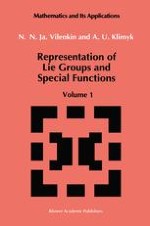1991 | Buch
Representation of Lie Groups and Special Functions
Volume 1: Simplest Lie Groups, Special Functions and Integral Transforms
verfasst von: N. Ja. Vilenkin, A. U. Klimyk
Verlag: Springer Netherlands
Buchreihe : Mathematics and Its Applications
Enthalten in: Professional Book Archive
